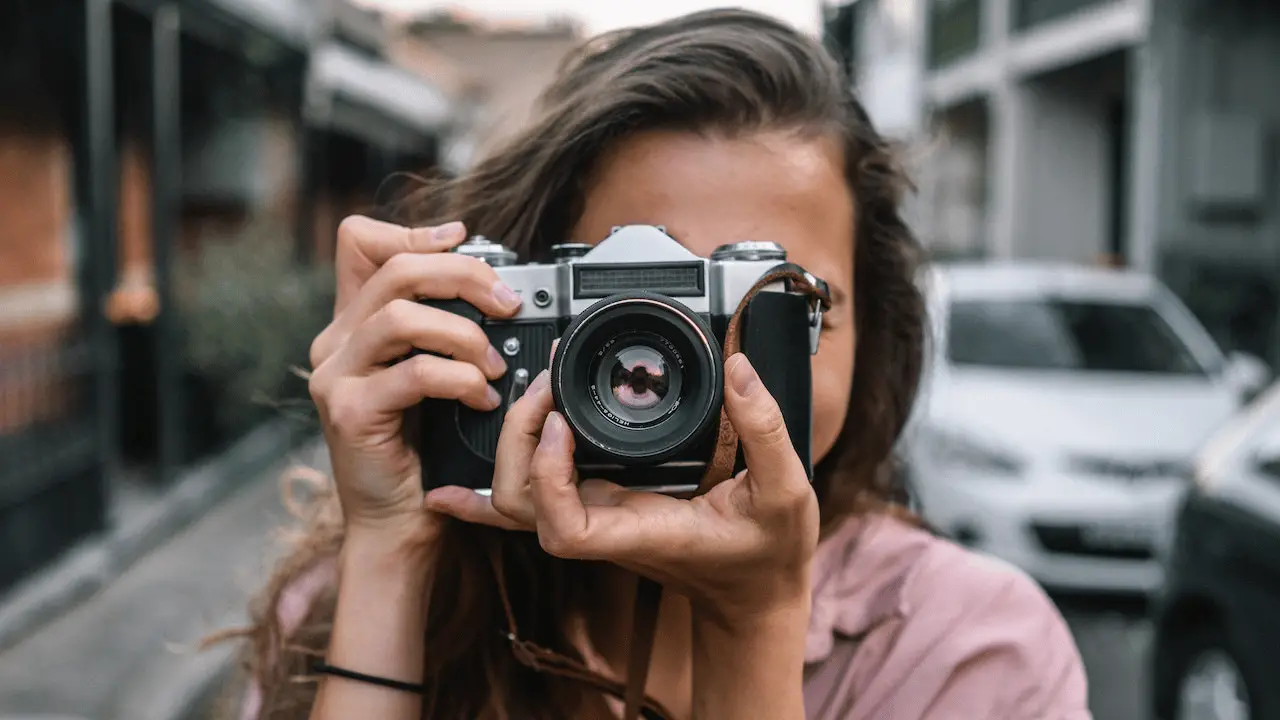A German company that manufactures cameras and lenses: One example of a German company that manufactures cameras and lenses is Leica Camera AG. Leica is a well-known brand in the photography industry, famous for its high-quality cameras and lenses. The company was founded in 1914 and is headquartered in Wetzlar, Germany.
Leica offers a range of cameras, including digital and film cameras, as well as lenses for various applications, from wide-angle to telephoto. Other German companies that manufacture cameras and lenses include Carl Zeiss AG and Schneider-Kreuznach.
The top German camera and lens brands, along with their pros and cons, features, and specifications:
Leica Camera AG
- Leica is known for producing some of the finest cameras and lenses in the world.
- They are known for their precision engineering and attention to detail, which results in high-quality, sharp images.
- Leica cameras and lenses are also known for their exceptional build quality, with many models featuring a solid metal construction.
- However, this level of quality and performance comes at a high cost, making Leica products out of reach for many photographers.
Popular Leica cameras:
- Leica M10-P: A digital rangefinder camera with a 24-megapixel full-frame sensor, manual focus, and built-in Wi-Fi connectivity.
- Leica Q2: A compact full-frame camera with a 47-megapixel sensor, 28mm f/1.7 lens, and a weather-sealed body.
Popular Leica lenses:
- Leica Summilux-M 50mm f/1.4 ASPH.: A fast prime lens that is perfect for low-light photography, with a wide aperture of f/1.4.
- Leica APO-Summicron-M 50mm f/2 ASPH.: A high-performance lens that is known for its sharpness and color accuracy, making it a favorite of portrait and landscape photographers.
Pros:
- Exceptional image quality with sharpness and detail.
- Solid metal construction that is built to last.
- Wide range of lenses with fast apertures.
- Attention to detail and precision engineering.
- Built-in Wi-Fi connectivity on some models.
Cons:
- High cost compared to other camera brands.
- Limited autofocus capabilities on some models.
- Not suitable for video or sports photography.
- Limited compatibility with third-party lenses.
Specifications and Features:
- High-resolution full-frame sensors.
- Manual focus on most models.
- Fast lenses with wide apertures.
- Built-in Wi-Fi on some models.
- Solid metal construction with weather sealing on some models.
- Rangefinder focusing system on some models.
Leica Camera AG Uses
- Street and documentary photography
- Portraiture and studio photography
- Landscape and architecture photography
- Travel and adventure photography
- Black and white photography
 Carl Zeiss AG
Carl Zeiss AG
- Carl Zeiss is another German company that is known for producing high-quality lenses for cameras and other optical instruments.
- They are known for their precision engineering and advanced optical design, which results in lenses that produce sharp, high-contrast images with excellent color accuracy.
- However, Zeiss lenses can be expensive, and not all models are compatible with all camera systems.
Popular Zeiss lenses:
- Zeiss Batis 85mm f/1.8: A portrait lens with a fast aperture of f/1.8, built-in image stabilization, and weather-sealed construction.
- Zeiss Otus 55mm f/1.4: A manual focus lens with exceptional sharpness and contrast, making it ideal for high-resolution cameras.
Pros:
- High-quality optics with excellent sharpness and contrast.
- Advanced optical design for optimal image quality.
- Fast apertures and precise manual focusing.
- Wide range of lenses for different camera systems.
- Built-in image stabilization on some models.
Cons:
- Higher cost compared to other lens brands.
- Limited autofocus capabilities on some models.
- Some models are not compatible with all camera systems.
- Limited zoom range on most models.
Specifications and Features:
- High-quality optics with advanced coatings.
- Fast apertures for low-light photography.
- Manual focus with precise focus control.
- Built-in image stabilization on some models.
- Rugged construction with weather sealing on some models.
Carl Zeiss AG Uses
- Portraiture and studio photography
- Landscape and architecture photography
- Astrophotography and night sky photography
- Wildlife and nature photography
- Product and commercial photography
Schneider-Kreuznach
- Schneider-Kreuznach is a German company that produces a range of lenses for different camera systems, including DSLR and mirrorless cameras.
- They are known for their high-quality optics and precise engineering, resulting in lenses that produce sharp images with excellent color accuracy.
- Schneider-Kreuznach lenses are also known for their rugged construction, making them ideal for outdoor photography.
- However, like other German brands, Schneider-Kreuznach lenses can be expensive.
Popular Schneider-Kreuznach lenses:
- Xenon FF-Prime lenses: A series of manual-focus lenses that are designed for use with full-frame cameras, with a range of focal lengths from 25mm to 100mm.
- Kreuznach Cine-Xenar III lenses: A series of cinema lenses that are designed for use with professional video cameras, with a range of focal lengths from 18mm to 135mm.
Pros:
- High-quality optics with sharp images and accurate colors.
- Wide range of lenses for different camera systems.
- Rugged construction for outdoor photography.
- Manual focus with precise focus control.
- Cinema lenses for professional video production.
Cons:
- Limited autofocus capabilities on most models.
- Higher cost compared to other lens brands.
- Limited zoom range on most models.
- Limited range of wide-angle lenses.
Specifications and Features:
- High-quality optics with advanced coatings.
- Manual focus with precise focus control.
- Cinema lenses with industry-standard features.
- Rugged construction with weather sealing on some models.
- Wide range of focal lengths available.
Schneider-Kreuznach Uses
- Cinematography and video production
- Wildlife and nature photography
- Landscape and architecture photography
- Portraiture and studio photography
- Commercial and industrial photography
Overall, German camera and lens brands are known for their high quality, precision engineering, and advanced optical design.
While their products can be expensive, they are often worth the investment for serious photographers who demand the best image quality and performance.
The cameras and lenses I mentioned above are suitable for a range of photography and videography applications.
Keep in mind that the use of cameras and lenses is not limited to these applications, and you can use them for a wide range of other photography and videography needs based on your preferences and creativity.
When choosing a German company that manufactures cameras and lenses, there are several important factors to consider:
- Image quality: The most important factor to consider when choosing a camera and lens manufacturer is image quality. Look for companies that produce lenses and cameras with sharp, clear images, accurate color, and good contrast.
- Build quality: You’ll want to invest in a camera and lens that will last for years. Look for products that are well-built, with solid construction and high-quality materials.
- Compatibility: Make sure the lenses and cameras you choose are compatible with each other and with your existing gear. Check to see if the company offers a range of lenses that fit your needs and work with your camera system.
- Price: German camera and lens manufacturers are known for producing high-end, high-quality products, which often come with a premium price tag. Consider your budget and choose a company that offers products that fit within your price range.
- Customer support: Look for a company that offers good customer support, including a warranty on their products, repair services, and technical support if you run into any issues.
- Brand reputation: Research the brand’s reputation and customer reviews to see what others are saying about their products. Look for companies that have a good reputation for producing high-quality cameras and lenses.
Conclusion
In conclusion, German companies that manufacture cameras and lenses are known for their exceptional quality and precision engineering.
Companies such as Leica Camera AG, Carl Zeiss AG, and Schneider-Kreuznach produce high-quality cameras and lenses that are suitable for a range of photography and videography applications, including portraiture, landscape, architecture, nature, and commercial photography.
When choosing a camera and lens manufacturer, it’s essential to consider factors such as image quality, build quality, compatibility, price, customer support, and brand reputation.
By taking these factors into account, you can find a camera and lens that meets your needs and provides you with the best possible results.
Check our list!
blackmagic-pocket-cinema-camera-4k-lenses/
do-pawn-shops-purchase-camera-lenses/
FAQs
Here are some FAQs related to the information provided above:
Q. What makes German camera and lens manufacturers stand out from other brands?
German camera and lens manufacturers are known for their exceptional quality and precision engineering.
They use high-quality materials and advanced optical designs to produce cameras and lenses with exceptional image quality, sharpness, and detail.
Q. What are some of the pros and cons of choosing a German camera and lens manufacturer?
- Pros: Exceptional image quality, solid construction, a wide range of lenses, attention to detail and precision engineering, and built-in features such as Wi-Fi connectivity or image stabilization.
- Cons: Higher cost compared to other brands, limited autofocus capabilities on some models, limited compatibility with third-party lenses, limited zoom range on most models.
Q. What are some of the typical uses of cameras and lenses from German manufacturers?
- Typical uses include street and documentary photography, portraiture and studio photography, landscape and architecture photography, travel and adventure photography, wildlife and nature photography, astrophotography and night sky photography, product and commercial photography, and cinematography and video production.
Q. How do I choose a German camera and lens manufacturer that meets my needs?
- Consider factors such as image quality, build quality, compatibility, price, customer support, and brand reputation when choosing a camera and lens manufacturer. Research the different brands and their products, read reviews from other customers, and compare the features and specifications of each camera and lens to find one that meets your needs and budget.

